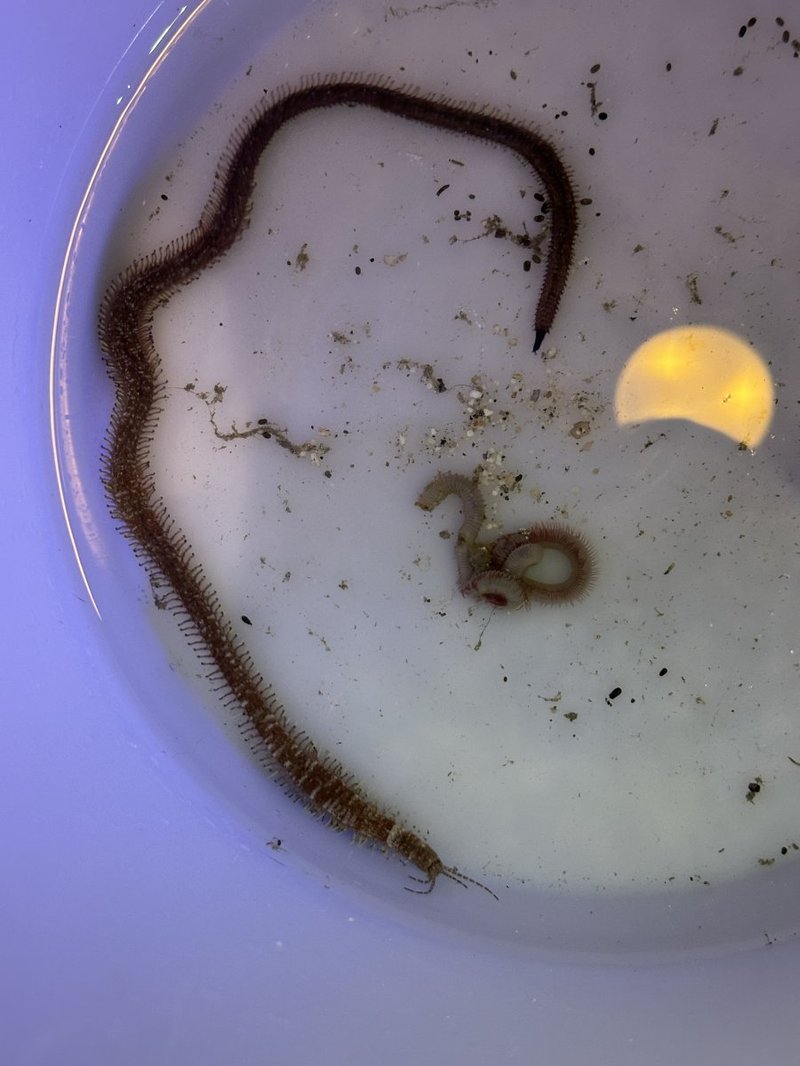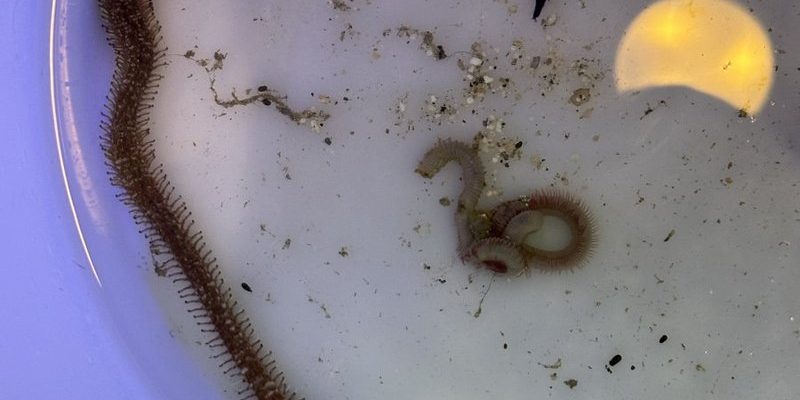
Picture this: you’ve set up your reef tank with colorful corals, lively fish, and all sorts of ornamental decor, creating a tiny underwater paradise. But when you notice your fish are getting mysteriously nibbled, or your corals start to disappear overnight, it might not just be bad luck. Enter the bobbit worm—a crafty predator that blends right into the sand and can be tough to spot. So, what exactly should you be looking for? Let’s break it down.
What Is a Bobbit Worm?
Bobbit worms are fascinating, yet sneaky creatures belonging to the Eunicidae family. They can grow quite long, sometimes measuring up to 10 feet, but most in home aquariums are typically smaller. These worms have a remarkable ability to camouflage themselves, making them incredibly effective hunters. Instead of exploring the tank like your other critters, bobbit worms tend to stay buried in the substrate, ready to ambush unsuspecting prey.
You might think, “What’s the big deal?” Well, while they may look harmless, their predatory nature can be a real issue in a reef tank. Bobbit worms feed on fish, invertebrates, and even corals. Imagine discovering that the fish you’ve nurtured is missing, only to find out it met its end thanks to a bobbit worm!
Signs of a Bobbit Worm in Your Tank
Recognizing the signs of a bobbit worm is crucial for maintaining a healthy reef tank. Here are some common indicators:
- Fish Mysteriously Disappearing: If your fish seem to vanish without a trace, a bobbit worm could be the culprit. They often snag prey at night, leaving little evidence behind.
- Injured Fish: If you notice your fish have unexplained bite marks or injuries, it could be a sign of a bobbit worm attack.
- Corals Losing Tissue: Healthy corals should look vibrant and full. If they start to lose tissue or die off, a bobbit worm may be feasting on them.
- Unusual Sand Movements: Keep an eye on the substrate. If you see sand being pushed around, it might mean a bobbit worm is tunneling beneath the surface.
These signs can be alarming, but don’t panic just yet. Understanding these indicators can help you take appropriate action.
How to Identify a Bobbit Worm
Okay, so now that you know what signs to look for, let’s focus on identifying the worm itself. Bobbit worms can be tricky to spot, but there are a few characteristics that can help you confirm their presence:
1. **Coloration and Size:** Bobbit worms often have dark, earthy colors, like greens, browns, or reds. They can range from just a few inches to several feet long, depending on their age and environment. However, the ones you might see in aquariums tend to be around 12-36 inches long.
2. **Segmented Body:** These worms have a segmented body, which can be quite striking when they’re fully out. When they extend their bodies out of the sand, you’ll notice a series of rings that give them a worm-like appearance.
3. **Feeding Behavior:** If you’re lucky enough to catch one in action, bobbit worms extend their jaws to grab prey. They can also retract quickly back into the sand. This lightning-fast movement is a dead giveaway.
If you’re wondering how to spot them, a flashlight during feeding times can help. Bobbit worms are more active in low light, making it easier for you to see them.
How Bobbit Worms Affect Your Reef Tank
Let’s get real—having a bobbit worm in your reef tank isn’t just a quirky fact; it can lead to some serious problems:
– **Threat to Biodiversity:** Bobbit worms can significantly impact the balance of your reef ecosystem. Their predatory nature means they can thin out populations of smaller fish and invertebrates that you might be trying to nurture.
– **Coral Damage:** If they start munching on your corals, that not only affects the beauty of your tank but can also lead to bigger issues like water quality problems.
– **Stress for Tank Inhabitants:** Fish and invertebrates can become stressed in the presence of a bobbit worm due to the constant threat of predation. This stress can lead to weakened immune systems and make them more susceptible to diseases.
So, it’s clear that if a bobbit worm decides to set up shop in your tank, it’s something you’ll want to address sooner rather than later.
Dealing with Bobbit Worms
If you discover signs of a bobbit worm, don’t worry—there are steps you can take to deal with them. Here’s a plan of action:
1. **Removal:** The most effective way to get rid of a bobbit worm is to physically remove it from your tank. This can be tricky since they tend to bury themselves deep. Using a siphon or trap can help you extract the worm without disturbing the rest of your tank too much.
2. **Preventative Measures:** To avoid future infestations, consider quarantining new fish or inverts before introducing them to your reef. This extra step can help prevent introducing pests like bobbit worms.
3. **Monitor Your Tank:** After removal, keep a close eye on your tank. Regularly check for any signs of returning bobbit worms or other nuisances. Maintaining a healthy ecosystem will help keep these critters away.
4. **Seek Expert Help:** If you’re not comfortable handling the situation yourself, don’t hesitate to reach out to a professional aquarist or your local fish store. They can provide guidance or even assist with removal.
Bobbit worms can be fascinating yet troublesome guests in your reef tank. By knowing the signs, understanding how to identify them, and having a plan for removal, you can protect your carefully curated underwater paradise. If you ever notice any of those warning signs—disappearing fish, strange substrate movements, or damaged corals—take a moment to investigate. Remember, your reef tank is your happy space, and keeping it healthy is key to maintaining that joy. Stay vigilant, and happy fishkeeping!

